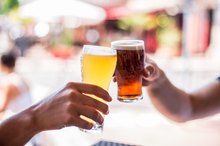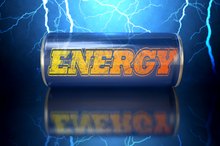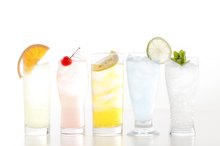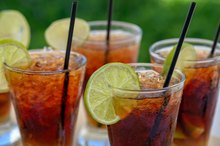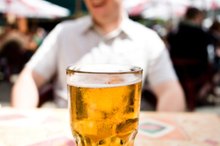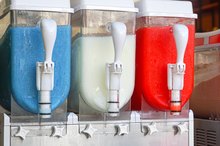What does fact checked mean?
At Healthfully, we strive to deliver objective content that is accurate and up-to-date. Our team periodically reviews articles in order to ensure content quality. The sources cited below consist of evidence from peer-reviewed journals, prominent medical organizations, academic associations, and government data.
The information contained on this site is for informational purposes only, and should not be used as a substitute for the advice of a professional health care provider. Please check with the appropriate physician regarding health questions and concerns. Although we strive to deliver accurate and up-to-date information, no guarantee to that effect is made.
Is High-C Fruit Punch Healthy?
High-C Fruit Punch, also known as Hi-C Blast Fruit Punch, contains 10 percent fruit juice plus water, sweeteners, artificial flavoring and artificial color. Hi-C drinks were once marketed heavily to parents as a source of vitamin C, which is derived from the addition of ascorbic acid to the beverage mix.
Nutritional Content
One 8-oz. serving of Hi-C Flashin' Fruit Punch contains 100 calories, including 24 g sugar and 100 percent of the RDA for vitamin C. By comparison, 8 oz. of 100 percent grape juice from concentrate contains 128 calories and 85 percent of the RDA for vitamin C.
Vitamin C
Review of Lifewater by SoBe
Learn More
Vitamin C is an antioxidant that helps repair cells and build new ones. Vitamin C may also help with immune function and protect against atherosclerosis. It may also support the role of vitamin E, another antioxidant. Vitamin C is required for healthy skin and may affect bone density. The current Recommended Daily Allowance for vitamin C for men age 19 and older is 90 mg/day; the current RDA for women age 19 and older is 75 mg/day.
- Vitamin C is an antioxidant that helps repair cells and build new ones.
- Vitamin C may also help with immune function and protect against atherosclerosis.
History
Hi-C Fruit Punch is manufactured by the Minute Maid division of the Coca-Cola Company. It was first introduced in 1946 by Niles Foster, who advertised Hi-C as a source of vitamin C. Minute Maid produces three lines of Hi-C, the drink box; Hi-C Blast; and Hi-C Sour Blast. Hi-C, the drink box and Hi-C Blast have a fruit punch flavor. Ascorbic acid is added to Hi-C drinks to obtain the high vitamin C content of these drinks.
- Hi-C Fruit Punch is manufactured by the Minute Maid division of the Coca-Cola Company.
- It was first introduced in 1946 by Niles Foster, who advertised Hi-C as a source of vitamin C. Minute Maid produces three lines of Hi-C, the drink box; Hi-C Blast; and Hi-C Sour Blast.
Retail Availability
How Many Calories Are in Malt Liquor?
Learn More
Hi-C has been available since the 1940s in supermarkets, small grocery stores, and convenience stores nationwide. While the lineup of flavors has changed over time, the recipe has stayed the same over the years. Hi-C drinks are typically composed of no more than 10 percent fruit juice.
Health Considerations
Hi-C qualifies as a drink with added sweetener. Added sweeteners add "empty" calories without any other nutritional benefit. Hi-C is sweetened with high fructose corn syrup. Researchers at the Harvard Medical School claim that "fructose is metabolized almost exclusively in the liver 1. It’s more likely to result in the creation of fats, which increase the risk for heart disease. Moreover, recent work has shown that fructose may have an influence on the appetite hormones. High levels of fructose may blunt sensations of fullness and could lead to overeating."
- Hi-C qualifies as a drink with added sweetener.
- Hi-C is sweetened with high fructose corn syrup.
Related Articles
References
Writer Bio
Janelle Commins started writing professionally in 2007. She has written for the "UCLA Total Wellness" magazine on nutrition and fitness topics that are of interest to young adults. Her work has also appeared in various online publications. She holds a Bachelor of Science in nutrition science from University of California, Davis, and a Master of Science in public health from University of California, Los Angeles.

